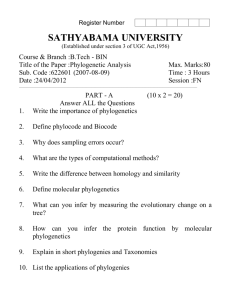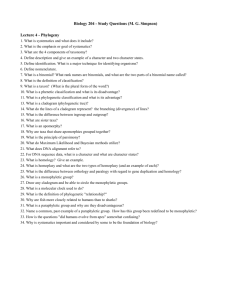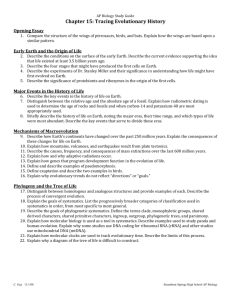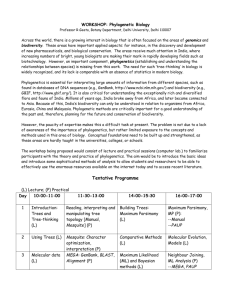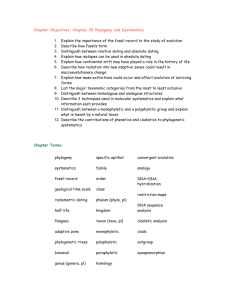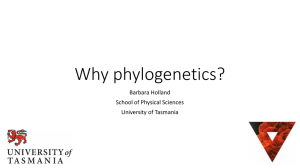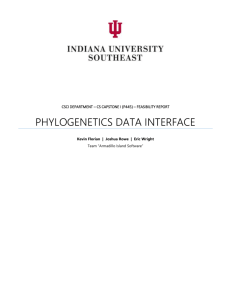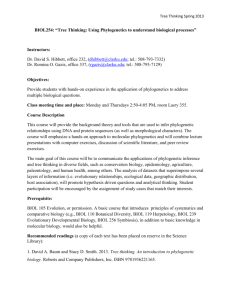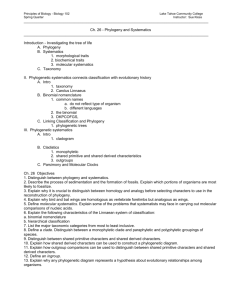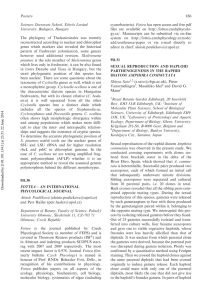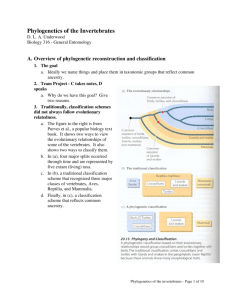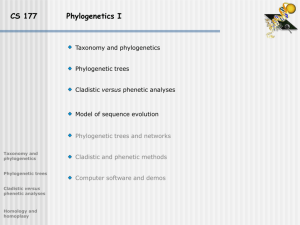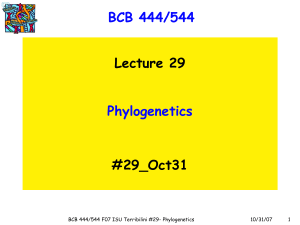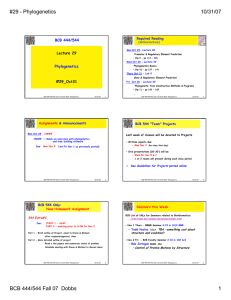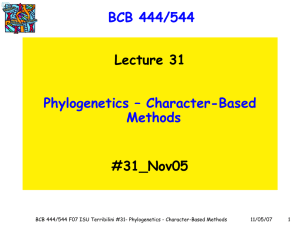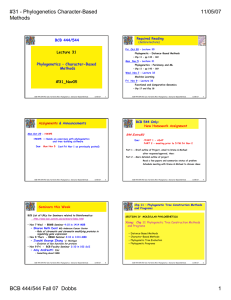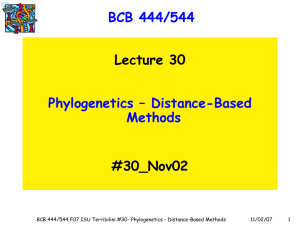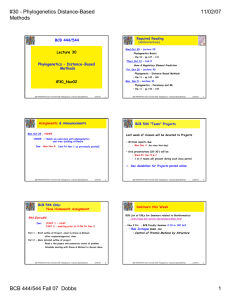Key terms: Phylogenetics Phylogenetic tree Clade Monophyletic
advertisement
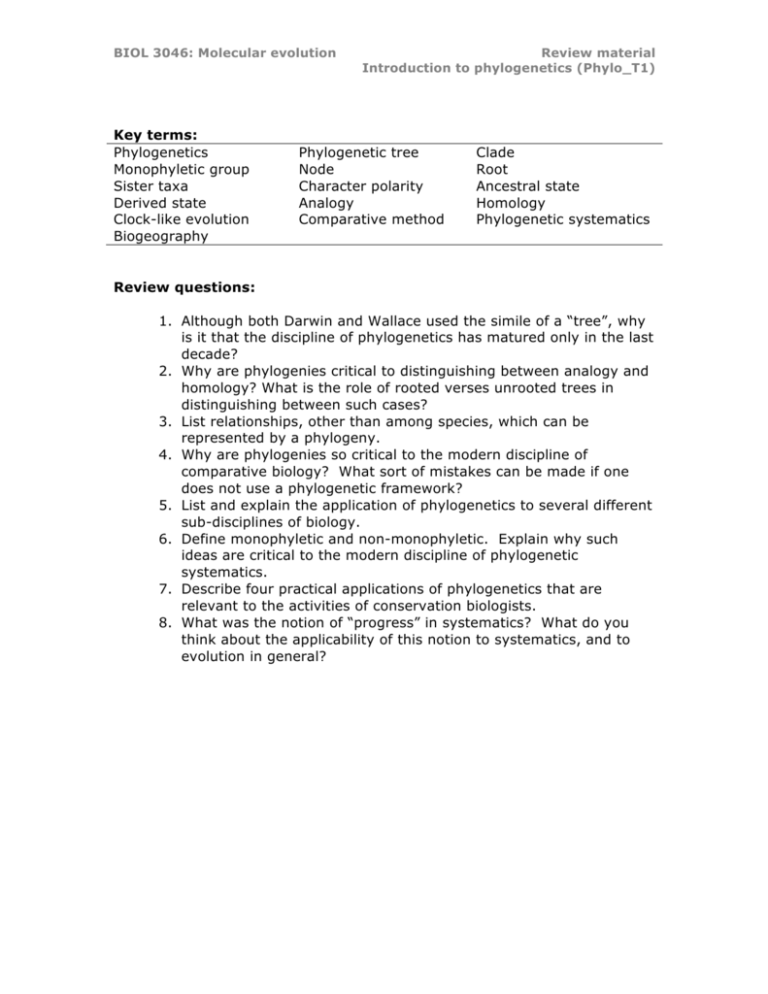
BIOL 3046: Molecular evolution Key terms: Phylogenetics Monophyletic group Sister taxa Derived state Clock-like evolution Biogeography Review material Introduction to phylogenetics (Phylo_T1) Phylogenetic tree Node Character polarity Analogy Comparative method Clade Root Ancestral state Homology Phylogenetic systematics Review questions: 1. Although both Darwin and Wallace used the simile of a “tree”, why is it that the discipline of phylogenetics has matured only in the last decade? 2. Why are phylogenies critical to distinguishing between analogy and homology? What is the role of rooted verses unrooted trees in distinguishing between such cases? 3. List relationships, other than among species, which can be represented by a phylogeny. 4. Why are phylogenies so critical to the modern discipline of comparative biology? What sort of mistakes can be made if one does not use a phylogenetic framework? 5. List and explain the application of phylogenetics to several different sub-disciplines of biology. 6. Define monophyletic and non-monophyletic. Explain why such ideas are critical to the modern discipline of phylogenetic systematics. 7. Describe four practical applications of phylogenetics that are relevant to the activities of conservation biologists. 8. What was the notion of “progress” in systematics? What do you think about the applicability of this notion to systematics, and to evolution in general?
